Eating Plan For Patients Following Bariatric Surgery
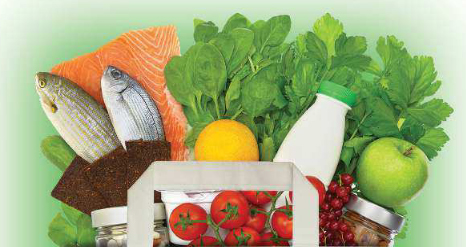
Stage 1 - Liquid Diet From day 3 for 2 weeks
When you need to use this information
- This information is appropriate for anyone who has had gastric banding, sleeve gastrectomy, gastric by-pass or duodenal switch
- .You will be told by your doctor when it is safe for you to start having sips of fluid.
- Progression from one stage to the next depends on the individual. In some cases, it may take longer than the recommended time but it will never take less.
Why you need to know this information
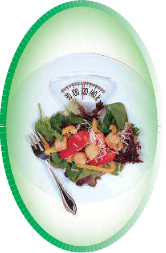
- The liquid-only stage of the diet allows the body time to heal and, if you have had gastric banding, helps the band to settle into position.
- Your stomach capacity is now much smaller, about the size of an egg cup.
Suitable Liquids
- It can be more difficult to meet your body’s requirements when you are only having liquids
- It is therefore important to ensure that the liquids during this stage provide the nutrients that your body needs.
- You will need to follow this liquid diet for 14 days after surgery.
The following liquids are suitable:
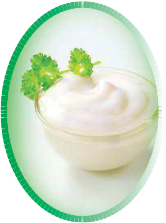
- Milk (Semi skimmed)
- Milk shakes made with semi-skimmed milk
- Clear or cream soup with no bits
- Build up soup and drinks
- Complan, Ovaltine, Horlicks made with semi skimmed milk
- Slimfast
- Thin yoghurt with no bits (Low fat or diet type)
- Thin custard (Low fat)
- Fruit smoothies made with pureed fruit and low fat or diet yoghurt
- Tea or coffee (with sweetener if needed)
- Stock cubes Marmite or Bovril
- Fruit juice (diluted with small amount of water)
- Fruit squashes (sugar free or low calorie varieties)
- Water or flavoured water (sugar free varieties) but not sparkling
Liquids to avoid
- Fizzy or sparkling drinks (this will make you bloated and uncomfortable)
- Alcohol (This can irritate the stomach and also provides empty calories)
- Any liquid with bits or lumps
How much and When
- You should aim for at least 6 to 8 cups of fluid a day. This is equivalent to 4pints or 2 litres.
- You should aim to have 1 pint of semi skimmed milk and 1 to 2 cups of fruit juice each day.
- It is important that you only drink small amounts of liquids at a time so you don’t cause the new stomach pouch to stretch
- You will need to drink very slowly, so take small sips
- Don’t be surprised if it takes you about 30 minutes to drink half a cup of fluid.
- It is useful to carry a bottle of low calorie fruit squash or other suitable fluid with you
Suggested Meal Plan
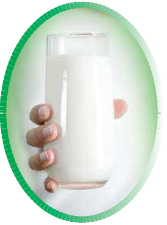
Breakfast
1 small glass of Slimfast or Build-up drink
Mid Morning
1 small glass of milk
Lunch
1 small cup of soup
1/2 small cup of low fat yoghurt (without bits)
Mid afternoon
1 small glass of flavoured milk
Evening Meal
1 small cup of soup or Complan (savoury) or Slimfast
Supper
1 small cup of chocolate or Ovaltine (made with milk) or a small glass of milk.
You can drink small amounts of tea, coffee, water and low calorie fruit squashes in between meals. But make sure they don’t fill you up so much that you can’t drink the nutritious liquids at meal times.
Supplements
It is recommended that you to take a multivitamin and mineral supplement after surgery. These supplements must be in the form of liquid or chewable varieties.
Stage 2 - Soft Diet Weeks 3 and 4
When you need to use this information

- This information is appropriate for anyone who has had gastric banding, sleeve gastrectomy, gastric by-pass or duodenal switch.
- You will be told by a member of the bariatric team when it is safe for you to start having small amounts of soft food.
- Progression from one stage to the next depends on the individual. In some cases, it may take longer than the recommended time but it will never take less.
- If you have any concerns about your tolerance to certain foods then you should contact the specialist Bariatric dietitian.
Why you need to know this information
- The soft food stage continues to allow the body to heal and, if you have had gastric banding, helps the band to settle into position, this may take about a month.
- Eating large amounts of food or having solid food at this stage may cause you to vomit.
Suitable Foods
- It can be more difficult to meet your body’s requirements when you are only having small amounts of soft foods.
- It is therefore important to ensure that the food that you eat during this stage provide the nutrients that your body needs
- .All foods should have a smooth texture with no lumps, similar to the consistency of baby food. You may need to use a blender or food processor in order to get the correct consistency.
Suitable foods are:
- Weetabix, porridge or Ready Brek
- Mashed potato, Sweet potato or Yam
- Soft cooked pasta blended with a sauce preferably tomato
- Mashed vegetables such as carrots, parsnips
- Minced chicken or meat blended with a sauce or gravy
- Flaked fish mashed with a sauce
- Scrambled egg
- Cottage cheese
- Stewed fruit (either tinned in natural juice or fresh) with sweetener or mashed banana
- Smooth yoghurt with no bits (low fat)
- Custard (low fat)
- Sugar-free jelly
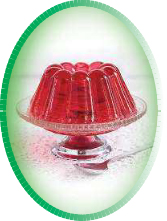
Foods and drinks to avoid
- Any solid food or food with lumps
- Stringy or fibrous vegetables such as celery, asparagus or sweet corn
- Fizzy or sparkling drinks will make you feel bloated and uncomfortable
- Alcohol can irritate the stomach and is high in calories
How much and When?
- Aim to have 3 to 4 small meals a day
- You should only have 2-3 tablespoons of food at each meal
- Serve your meals on a small side plate or child’s plate
- You will need to eat very slowly. Don’t be surprised if it takes you about 30 minutes to eat 2-3 tablespoons of food
- You must stop eating as soon as you feel full. If you eat too much you will stretch the new stomach pouch. It will also become painful and you will vomit.
- You will need to chew very well even though it is soft textured food
- You need to aim for at least 6 to 8 cups of fluid a day. This is equivalent to 4 pints or 2 litres
- It is important that you do not eat and drink at the same time. Fluids will dilute the food in the pouch and allow it to pass through the stomach too quickly
- Try not to drink for 30 minutes before or after eating
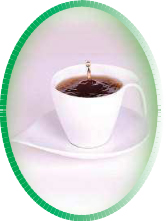
Suggested Meal Plan
When you get up
Cup of tea or coffee or glass of fruit juice (diluted with a small amount of water)
Breakfast
One Weetabix with plenty of semi-skimmed milk
Mid Morning
One glass of milk
Lunch
One scrambled egg, one tablespoon of mashed potato, one table spoon of mashed vegetables
Mid afternoon
Half a pot of low fat smooth yoghurt
Evening Meal
One table spoon of blended fish, chicken or meat, one tablespoon of blended pasta or rice, one tablespoon of mashed vegetables
Supper
One table spoon of stewed fruit or half a mashed banana with small amount of low fat custard or half a pot of low fat yoghurtYou can drink small amounts of tea, coffee, water and low calorie fruit squashes in between meals.
Supplements
It is recommended that you take a multivitamin and mineral supplement after surgery. You may now be able to change to an ordinary multivitamin rather than using liquid or chewable varieties. Suitable brands are Centrum or Sanatogen A-Z Complete.
Tips for preparing meals
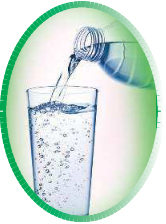
- You will need a food processor or blender to prepare some of your food
- Remove skin, gristle, bone or fat before blending meat or fish. Try using minced meat, chicken or turkey
- Meat and chicken can be dry so you will need to add a low fat sauce, gravy or semi-skimmed milk when blending
- Meat and chicken that has been casseroled or stewed blends very well
- Potatoes can be mashed with semi-skimmed milk and a low fat spread or use instant mash
- Well cooked pasta in a sauce (preferably a tomato based sauce) can be blended to a smooth soft consistency
- Most fruit and vegetables mash well
- Blended food can be put into ice-cubes trays and frozen for later use
- Small amounts of ready made meals such as cottage pie of fisherman’s pie could be used with some extra mashed vegetables
Stage 3 - Textured Food Diet Weeks 5 and 6
When you need to use this information
- This information is appropriate for anyone who has had gastric banding, sleeve gastrectomy, gastric by-pass or duodenal switch
- You will be told by a member of the Bariatric team when it is safe for you to start having small amounts of textured food
- Progression from one stage to the next depends on the individual. In some cases it may take longer than the recommended time but it will never take less.
- If you have any concerns about your tolerance to certain foods then you should contact the specialist Bariatric dietitian.
Why you need to know this information
This stage allows you to introduce textured foods into your diet.
You must eat very slowly; be prepared to allow 30 minutes to eat your meal.
You will need to chew food very well to prevent discomfort.
It is important that you stop eating as soon as you feel full so you don’t stretch the new stomach pouch.
Eating too much and eating too quickly will cause pain and vomiting.
You may find that there are some foods that you can’t manage at this time so leave them and try again later.
Suitable Foods
- It is important that the foods you eat are nutritious in order to provide the nutrients such as protein, vitamins and minerals that your body needs.
- Most of your food should still have a soft or mashed texture.
Suitable foods are:
1. Weetabix, porridge or Ready Brek
2. Mashed potato, Sweet potato or Yam
3. Soft cooked pasta with a sauce (preferably tomato)
4. Well cooked rice
5. Mashed vegetables such as carrots, parsnips
6. Minced chicken or meat with a sauce or gravy
7. Flaked fish with a sauce
8. Scrambled egg or soft omelette
9. Cottage cheese, low fat cream cheese or grated reduced fat cheese
10. Well cooked pulses such as mashed baked beans, chick peas, kidney beans
11. Soft fruit or tinned fruit in natural juice
12. Low fat yoghurt or fromage frais
13. Low fat Custard
14. Sugar-free jelly
15. Bread sticks, crisp breads, crackers or dry toast
Food and drinks to avoid
- Any food with a tough skin such as sausages, bacon rind, tomato skins or apple skins
- Stringy or fibrous vegetables such as celery, asparagus or sweet corn
- Fizzy or sparkling drinks will make you feel bloated and uncomfortable.
- Alcohol can irritate the stomach and is high in calories
Amounts and Timings
- Aim to have 3 small meals a day.
- If you feel hungry between meals try to have one of the snacks suggested.
- Your portion sizes may start to increase slightly but remember to stop eating as soon as you feel full• Serve your meals on a small side plate or child’s plate.
- You still need to eat very slowly and chew food very well. Don’t forget it should take you about 30 minutes to eat your meal.
- You must stop eating as soon as you feel full. If you eat too much too quickly it will become painful and you will vomit.
- You need to aim for 6-8 cups of fluid a day . This is equivalent to 4 pints or 2 litres.
- It is important that you do not eat and drink at the same time. Fluids will dilute the food in the pouch and allow it to pass through too quickly.
- Try not to drink for 30 minutes before or after eating.
Suggested Meal Plan
When you get up
Cup of tea or coffee or glass of fruit juice
Breakfast:
1 Weetabix with plenty of semi-skimmed milk or 1 sachet of instant oats or small bowl of porridge. Use a sweetener rather than sugar.
Lunch:
Cheese omelette made with 2 eggs and reduced fat grated cheese with 1 slice dry toast.
Evening Meal:
Minced meat in a tomato sauce with well cooked pasta and mashed vegetables.You can drink tea, coffee, water and low calorie fruit squashes in between meals.
Suggested Snacks
- Glass of semi-skimmed milk
- Glass of fruit smoothie made with pureed fruit and low fat yoghurt
- One small low fat or diet yoghurt, mousse or fromage frais
- Small bowl of sugar free jelly
- Fruit-tinned in natural juice, stewed or soft fruit
- One to two crisp breads or crackers with low fat cheese spread or one to two bread sticks.
Supplements
It is recommended that you to take a multivitamin and mineral supplement after surgery. You may now be able to change to an ordinary multivitamin rather than using liquid or chewable varieties. Suitable brands are Centrum or Sanatogen A-Z Complete.
Tips for preparing Meals
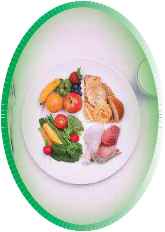
- You will need a food processor or blender to prepare some of your food.
- Remove skin, gristle, bone or fat before blending meat or fish. Try using minced meat, chicken or turkey.
- Meat and chicken can be dry so you will need to add a low fat sauce, gravy or semi-skimmed milk when blending.
- Meat and chicken that has been casseroled or stewed blends very well.
- Potatoes can be mashed with semi-skimmed milk and a low fat spread or use instant mash.
- Well-cooked pasta in a sauce (preferably a tomato based sauce) can be blended to a smooth soft consistency.
- Most fruits and vegetables mash well.
- Blended food can be put into ice cube trays and frozen for later use.
- Small amounts of ready made meals such as cottage pie of fisherman’s pie could be used with some extra mashed vegetables
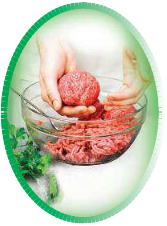
Summary
for Bariatric Surgery aftercare
Stitches:
Yo ur stitches are dissolvable and do not need to be removed.
Bathing:
Getting your wound wet is not recommended as this may cause infection. After five days the dressing can be removed, the area washed and dried with a clean towel. If there is any oozing, redness or swelling, please go to see your GP.
Pain:
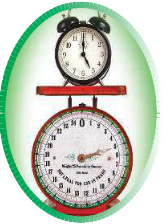
We advise that you take the pain killers you are given. If you find they are not helping with the pain please contact your GP.
Lifting:
Heavy lifting should be avoided for about two weeks. Lifting will put pressure on your wound which needs time to heal properly.
Sexual Activity:
You may resume your normal sexual activity as soon as it feels comfortable for you to do so.

Eating and Drinking
Stage 1: Weeks 1&2 after surgery - Liquids only, no solid or semi solid foods.
Stage 2: Weeks 3&4 after surgery - pureed diet and fluid.
State 3: Weeks 5&6 after surgery - Textured foods, soft diet and fluids.
Time off work: It is advisable to have 1-2 weeks off work, this will depend upon the type of work you do. We will give you a certificate to cover your stay in hospital. Your GP will supply you with another one for the remaining time you may need away from work.
Driving: driving shouldn’t be attempted for at least two weeks following your operation, or until you feel confident that you would be able to perform an emergency stop should you need to.

Follow-up appointments:
Dietician : 2 Weeks
Bariatric Surgeon : 4 Weeks



